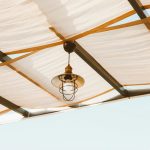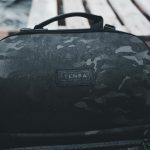Think of UPF ratings like a shield against the sun’s harmful rays. When choosing clothing, you might wonder how much protection you really need. UPF ratings range from 15 to 50+, with higher numbers indicating better defense. But what does that mean for your outdoor activities? Understanding the specifics can make a significant difference in your sun safety routine. Let’s explore how to make informed choices about UPF clothing.
Table of Contents
Key Takeaways
- UPF (Ultraviolet Protection Factor) measures how well clothing blocks UV radiation, crucial for skin protection during outdoor activities.
- A higher UPF rating indicates better sun protection, with UPF 50 blocking over 97.5% of UV rays.
- UPF ratings range from 15 (good protection) to 50+ (excellent protection), aiding in selecting appropriate clothing based on exposure duration.
- When choosing UPF clothing, opt for a rating of 30 or higher for effective UV protection, especially for prolonged sun exposure.
- Factors influencing UPF ratings include fabric type, color, treatment, and moisture levels, impacting overall sun protection effectiveness.
Understanding UPF: Definition and Purpose
When it comes to sun protection, understanding UPF (Ultraviolet Protection Factor) is vital. UPF measures how much UV radiation can penetrate fabric and reach your skin.
It’s not just a technical term; it directly impacts your safety while enjoying outdoor activities. A higher UPF rating indicates better protection, meaning you’re less likely to suffer from sunburn or long-term skin damage.
Wearing clothing with a good UPF rating can considerably reduce your UV exposure, making it essential for anyone who spends time in the sun.
The UPF Rating Scale Explained
Understanding UPF ratings is essential for choosing the right clothing to protect yourself from harmful UV rays.
Each UPF category indicates how effectively a fabric blocks UV radiation, and a higher rating means better protection.
Knowing these ratings helps you make informed decisions about your sun safety.
Understanding UPF Ratings
The UPF rating scale is essential for anyone looking to protect their skin from harmful UV radiation while enjoying outdoor activities.
UPF, or Ultraviolet Protection Factor, measures how well a fabric blocks UV rays. For instance, a UPF rating of 50 means only 1/50th of the sun’s UV radiation can penetrate the fabric.
This rating helps you choose the right clothing based on your outdoor plans. Higher UPF ratings provide better protection, making them ideal for prolonged sun exposure.
When shopping, look for labels indicating UPF ratings to guarantee you’re making informed choices.
UPF Rating Categories
UPF ratings fall into several categories that help you quickly assess the level of sun protection a garment offers.
Understanding these categories is essential for making informed choices about your clothing. Here’s a breakdown of the UPF rating scale:
- UPF 15-24: Offers good protection, blocking about 93-96% of UV rays. Ideal for everyday wear.
- UPF 25-39: Provides very good protection, blocking about 96-97.5% of UV rays. Great for outdoor activities.
- UPF 40+: Delivers excellent protection, blocking over 97.5% of UV rays. Best for prolonged sun exposure.
Importance of Higher UPF
When choosing clothing for sun protection, opting for a higher UPF rating can considerably reduce your risk of UV damage. A UPF rating of 30 or higher blocks about 97% of harmful UV rays, offering better protection for your skin.
This is especially important if you spend long hours outdoors, where cumulative sun exposure can lead to skin issues like sunburn or even skin cancer. Higher UPF fabrics often use tighter weaves or special treatments that enhance their protective qualities.
Factors That Influence UPF Ratings
Several factors influence UPF ratings in clothing, impacting how effectively garments protect you from harmful UV rays.
Understanding these factors can help you choose the right apparel for sun protection.
Here are three key elements to evaluate:
- Fabric Type: Different materials have varying levels of UV protection. Denser fabrics, like polyester, usually offer better UPF ratings than lighter, loosely woven fabrics.
- Color: Darker colors absorb more UV radiation compared to lighter shades, which can enhance the garment’s UPF rating.
- Treatment and Finishing: Some fabrics undergo special treatments, like chemical finishes, that enhance their UV-blocking capabilities, resulting in higher UPF ratings.
Benefits of High UPF Ratings
High UPF ratings in clothing offer significant advantages for anyone looking to protect their skin from harmful UV rays.
When you wear high UPF-rated clothing, you’re not just reducing the risk of sunburn; you’re also lowering the chances of long-term skin damage, including premature aging and skin cancer.
This type of clothing provides a convenient barrier, allowing you to enjoy outdoor activities without constantly reapplying sunscreen.
Additionally, high UPF fabrics often come in lightweight, breathable materials, ensuring comfort even in hot weather.
High UPF fabrics are lightweight and breathable, providing comfort while keeping you protected in warm weather.
You’ll feel secure knowing that your skin is protected while still looking stylish.
Investing in high UPF clothing means prioritizing your skin health and enjoying the sun responsibly.
Comparing UPF Clothing to Ordinary Clothing
While ordinary clothing may provide some level of protection from the sun, it often falls short when it comes to shielding your skin from harmful UV rays.
That’s where UPF clothing comes in, offering superior defense. Here’s how they compare:
- UPF Rating: UPF clothing has a specific rating that indicates how much UV radiation it blocks, while ordinary fabrics don’t have this standard.
- Fabric Type: UPF garments are often made from tightly woven, specialized fabrics designed to enhance protection, unlike regular cotton or linen.
- Durability: UPF clothing maintains its protective qualities even after multiple washes, while ordinary clothing can lose effectiveness over time.
Choosing UPF clothing guarantees you’re taking proactive steps to protect your skin against potential sun damage.
Tips for Choosing the Right UPF Clothing
Choosing the right UPF clothing can make a big difference in your sun protection.
Think about the activities you’ll be doing, as different fabrics and colors can enhance or reduce UPF effectiveness.
Selecting the right combination can help keep you safe and comfortable outdoors.
Activity-Specific Selection
When it comes to selecting the right UPF clothing for your specific activities, understanding your environment and the intensity of your pursuits is essential.
Here are some tips to guide your selection:
- Consider Your Activity: If you’re hiking or running, opt for lightweight, breathable fabrics that provide comfort while protecting against UV rays.
- Match the Environment: For beach outings, choose garments with higher UPF ratings, as sand and water can reflect UV rays, increasing your exposure.
- Evaluate Duration: If you’re spending extended time outdoors, select clothing with UPF 50+ for maximum protection, particularly during peak sun hours.
Fabric and Color Choices
Selecting the right fabric and color for your UPF clothing can greatly enhance your sun protection. Opt for tightly woven fabrics like polyester or nylon, as they provide better coverage compared to loose weaves.
Look for materials specifically designed for UV protection, as they often feature additional treatments that boost their UPF rating.
When it comes to color, darker shades typically absorb more UV rays, offering better protection than lighter colors. However, lighter colors can be cooler to wear in hot weather, so consider your activity and environment.
Remember, layering can also be effective; combine lighter inner layers with darker outer ones for maximum protection while staying comfortable.
Always check the UPF rating to confirm you’re getting the sun safety you need.
Maintenance and Care for UPF Clothing
Although UPF clothing offers excellent protection from harmful UV rays, maintaining its effectiveness requires proper care.
To guarantee your garments continue to shield you from UV exposure, follow these maintenance tips:
- Wash Gently: Use a mild detergent and cold water. Avoid bleach or fabric softeners, as they can reduce UPF ratings.
- Air Dry: Whenever possible, hang your clothes to dry. High heat from dryers can damage the fibers and diminish protection.
- Store Properly: Keep your UPF clothing in a cool, dry place, away from direct sunlight. This helps maintain the fabric’s integrity.
Frequently Asked Questions
Can Upf-Rated Clothing Be Worn in Water?
Sure, you can wear UPF-rated clothing in water—because who doesn’t want extra protection from the sun while swimming? Just remember, wet fabric might reduce its effectiveness. So, it’s a bit of a trade-off!
How Often Should I Replace My UPF Clothing?
You should replace your UPF clothing every few years, especially if it shows signs of wear or fading. Regular inspections help guarantee you’re protected from UV rays while enjoying outdoor activities. Keep your skin safe!
Does Laundering Affect UPF Ratings?
Yes, laundering can affect UPF ratings. Frequent washing may degrade the fabric’s protective properties. To maintain effectiveness, follow care instructions carefully, avoiding harsh detergents and high heat, which can compromise your clothing’s sun protection.
Are There UPF Ratings for Accessories Like Hats?
You might think only clothing has UPF ratings, but accessories like hats can have them too. Choosing a hat with a good UPF rating helps protect your face and neck from harmful UV rays effectively.
Can I Increase UPF Protection by Layering Clothes?
Yes, you can increase UPF protection by layering clothes. When you wear multiple layers, you create additional barriers against UV rays, enhancing your overall protection. Just make certain the layers are lightweight and breathable for comfort.
- The Complete Guide to Nonwoven Abrasives - July 12, 2025
- What Is PLA Nonwoven Fabric? a Biodegradable Option - July 12, 2025
- A Crafter’s Guide to Working With Nonwoven Fabrics - July 12, 2025







